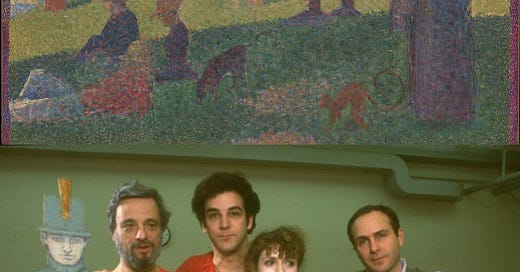Preparing my class on "The Universal Christ" by Richard Rohr, I have to be careful and stick with what the book says, not what Boyd believes. I have a bit of an ego that I struggle with. Teaching what somebody else believes rather than what I believe is probably why I never pursued teaching, as much as I deeply love education.
Rohr talks a lot about what I call the "God Path," the idea that God has a plan and that you're part of it. A lot of people dispel the idea that there is any God Path. They say there's physics, and there's your ego, but that's about it. There may be an invisible hand of the market, but there's no invisible hand of god.
Rohr, in particular, discusses how Jung faced this. It always seemed to me that for Jung's philosophy to happen, there had to be a God, but Jung denies God, or at least the established Christian idea of God. He believed very much in the qualities we ascribe to God but not how we express them. I can't say that I blame him.
One reason we often deny the God Path is that it's sometimes (often) unpleasant. I used to joke with my wife that I must be doing what God wants because it's really not going well. She didn't think much of my theory or my humor. Rohn talks about transformation through suffering. You have to strip away the old self for the new self to emerge.
I can't think of a place where that is more evident than in the rising action of the story of Christ. Jesus is captured, interrogated, whipped, and beaten, a diadem made of heavy thorns is pressed into his skull, forced to drag the cross he will die on through the streets of Jerusalem; he is then nailed to it and then strung up to die. Dying on the cross, in every written description, is one of the most painful and pitiful means of human expiration possible--and from that, he emerges as Jesus of Nazareth emerges as The Christ. No sane person would follow that God Path, but he did.
Georges Seurat is a French painter. I know him from Art History class and from Brent Lefavor, who taught me who Stephen Sondheim is. “Sunday in the Park With George” premiered on Broadway with Mandy Patinkin and Bernadette Peters. People have a different idea about when the "Golden Age" of Broadway happened. For me, it happened when those two were in their thirties and forties.
Georges Seurat developed and used a theory of art called "pointalism." Pointillism is just that. You make tiny dots of paint very close together, and then when you take a step back, it makes an image. You have to take a step back, though. If you try to look at the painting from inches away, all you'll see are dots, but take a few steps back, and you'll see sunlight, a river dappled in light, a woman in a dress with an umbrella, and a pet monkey.
Maybe God's Path is like that. You can't see it while you're in it. You have to look back from steps away to see he was right all along. It's really hard to tell people that they have to "trust the process" because they're often in genuine pain, and it's ultimately painful for a loving person to see another creature in pain.
Anyway, that's my challenge: to teach a lesson on what Rohr said, not what Boyd says about the same things. Your best teachers are far more humble than I am.
Listen to "Sunday In The Park with George." It's free on Spotify.




